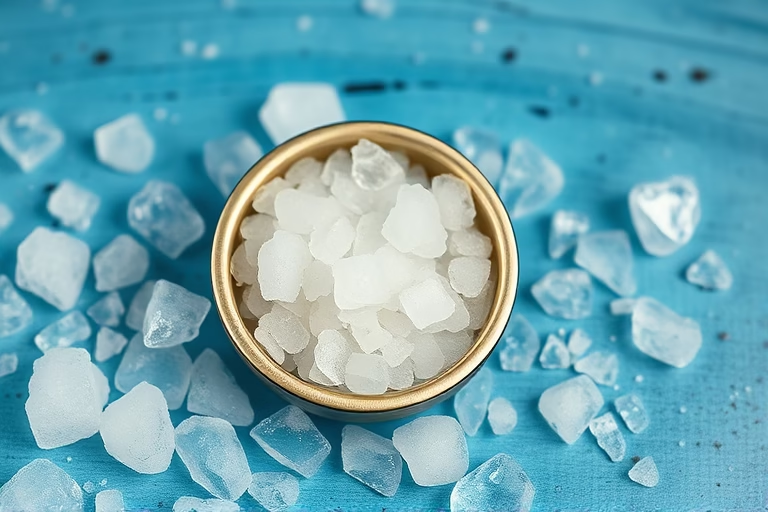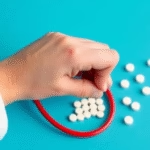In this article, we will be talking about does Celtic salt cause high blood pressure. Celtic salt, also known as grey salt, is harvested from the coastal regions of France and is minimally processed, allowing it to retain trace minerals and elements that are often stripped away in regular table salt. With a varied texture and flavor profile, many health enthusiasts advocate for its use over more refined salts. However, a pertinent question arises about its effect on blood pressure levels. Understanding the impact of Celtic salt on hypertension is crucial for individuals managing blood pressure conditions or looking to maintain overall health.
High blood pressure, or hypertension, is a condition where the force of blood against artery walls is consistently too high. It can lead to serious health issues, including heart disease and stroke, making it vital to monitor sodium intake. While Celtic salt might have natural minerals that could benefit health in various ways, it contains sodium just like traditional salt. Thus, there is a need to address whether this particular type of salt significantly contributes to increased blood pressure.
The Composition of Celtic Salt
Inevitably, the first step in understanding how Celtic salt interacts with blood pressure is to analyze its composition. Celtic salt contains sodium, magnesium, calcium, and a host of trace minerals. Sodium is the primary mineral in salt that is most famous for affecting blood pressure levels. The unique blending of minerals in Celtic salt is said to confer additional health benefits, including improved hydration and mineral balance. While these minerals are beneficial, individuals must still monitor their sodium intake closely, particularly if they are salt-sensitive or already have high blood pressure. Research shows that excessive sodium intake can lead to increased blood pressure, regardless of the type of salt consumed.
Celtic Salt Compared to Other Types of Salt
Celtic salt is often compared to table salt and Himalayan pink salt. While table salt is heavily processed and usually stripped of its natural trace minerals, Celtic salt retains many elements that some believe provide health benefits. However, it’s important to recognize that all forms of salt, including Celtic salt, contain sodium, and the body needs sodium in moderation. Excessive consumption can cause the body to retain water, thereby increasing blood pressure. This variation in sodium levels, regardless of the source, needs to be considered when managing dietary habits for blood pressure control.
Health Benefits of Celtic Salt
Proponents of Celtic salt often cite numerous health benefits, claiming that its trace minerals provide advantages over traditional table salt. Some studies suggest that minerals like magnesium can aid in vasodilation, which is the widening of blood vessels. Improved circulation can, in theory, contribute to lower blood pressure readings in some individuals. However, while the mineral content does present potential benefits, people with hypertension must still account for the sodium levels present in all salts. Thus, while there may be healthier comprehensive advantages to Celtic salt, they do not negate the risks associated with excessive sodium intake.
Sodium Sensitivity and Blood Pressure
One crucial element in the discussion of Celtic salt’s impact on high blood pressure is sodium sensitivity. Some individuals are inherently more sensitive to sodium and experience changes in blood pressure in response to even low sodium intake. For these individuals, opting for any kind of salt that contains sodium—even a mineral-rich one like Celtic salt—may not be advisable. Understanding one’s personal health status and dietary needs is critical when considering how different salts can impact blood pressure and cardiovascular health.
Tips for Using Celtic Salt Wisely
If one chooses to incorporate Celtic salt into their diet, moderation is key. Cooking with Celtic salt in small amounts can give meals a unique flavor while also providing trace minerals. However, it’s essential to monitor total sodium intake from all food sources, as they can contribute to overall sodium consumption. Individuals with existing high blood pressure or health conditions that require low sodium intake should work with healthcare professionals to develop an appropriate dietary strategy.
Understanding the Role of Diet in Blood Pressure Management
Diet plays a significant role in managing blood pressure. While examining the sodium content of various salts is essential, it is also important to think about overall dietary habits. A heart-healthy diet rich in fruits, vegetables, whole grains, and lean proteins can help control blood pressure. Balancing dietary sodium with potassium-rich foods, such as bananas and spinach, can also mitigate sodium’s blood pressure-raising effects. In a comprehensive eating plan that includes Celtic salt in moderation, individuals may see better control over their blood pressure without completely eliminating flavor from their meals.
Research Findings on Celtic Salt and Hypertension
Studies examining the specific effects of Celtic salt on blood pressure are limited. General findings about salt consumption and high blood pressure mostly revolve around sodium intake, rather than the specific types of salt consumed. Consequently, while some may point to anecdotal evidence concerning Celtic salt’s benefits, these claims often lack substantial scientific backbone. For those dealing with high blood pressure, relying on well-established dietary guidelines about sodium intake typically proves more beneficial than relying on mineral content from specific types of salt.
Consumer Awareness and Label Reading
Education regarding salt consumption is crucial, especially for those at risk for high blood pressure. Consumers should become adept at reading nutrition labels to understand sodium content in their foods. Given that processed foods can often contain high levels of sodium, awareness around meal preparation and ingredient choices becomes crucial. Using Celtic salt in home cooking may help individuals accept the overall sodium intake more easily, but it doesn’t shield against the consumption of sodium-rich processed foods.
Final Thoughts on Celtic Salt and Blood Pressure
To conclude, it’s essential to approach Celtic salt with a balanced perspective. **Celtic salt does contain sodium**, and excessive intake can contribute to high blood pressure. While the trace minerals in Celtic salt may offer certain health advantages, **individuals must remain vigilant regarding their overall sodium consumption**. If you experience hypertension or are at risk, consider evaluating your salt intake along with other dietary habits. Consult healthcare professionals for personalized advice that considers your background, and approach your diet thoughtfully.
Frequently Asked Questions
1. Does using Celtic salt instead of regular salt help lower blood pressure?
While Celtic salt contains trace minerals, it still has sodium. Lowering sodium intake is crucial for managing high blood pressure.
2. Can Celtic salt be used in cooking?
Yes, Celtic salt can be used for seasoning food, but it should be done in moderation to manage sodium levels.
3. Are there specific health benefits of Celtic salt?
Celtic salt contains trace minerals that some believe to be beneficial, but these should not overshadow the importance of sodium control.
4. How much sodium can I safely consume?
The general recommendation for adults is to limit sodium intake to less than 2,300 mg per day, ideally limiting it to 1,500 mg, especially for those with hypertension.
5. Should I completely eliminate salt from my diet?
Completely eliminating salt is not necessary for most people. It’s more about moderation and being aware of sodium in various foods.
Further Reading
What Type of Psychotherapy Is Best for Anxiety?







